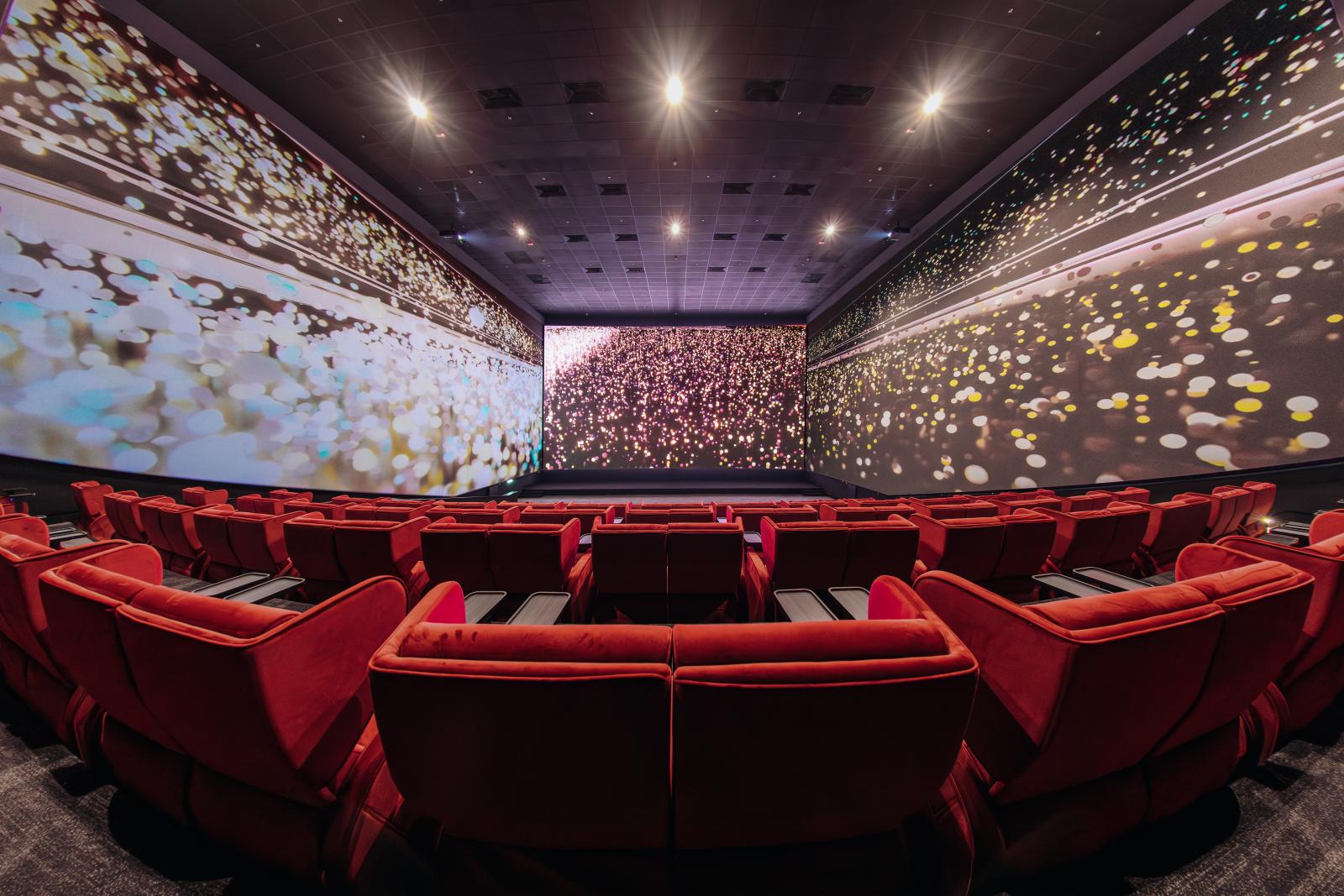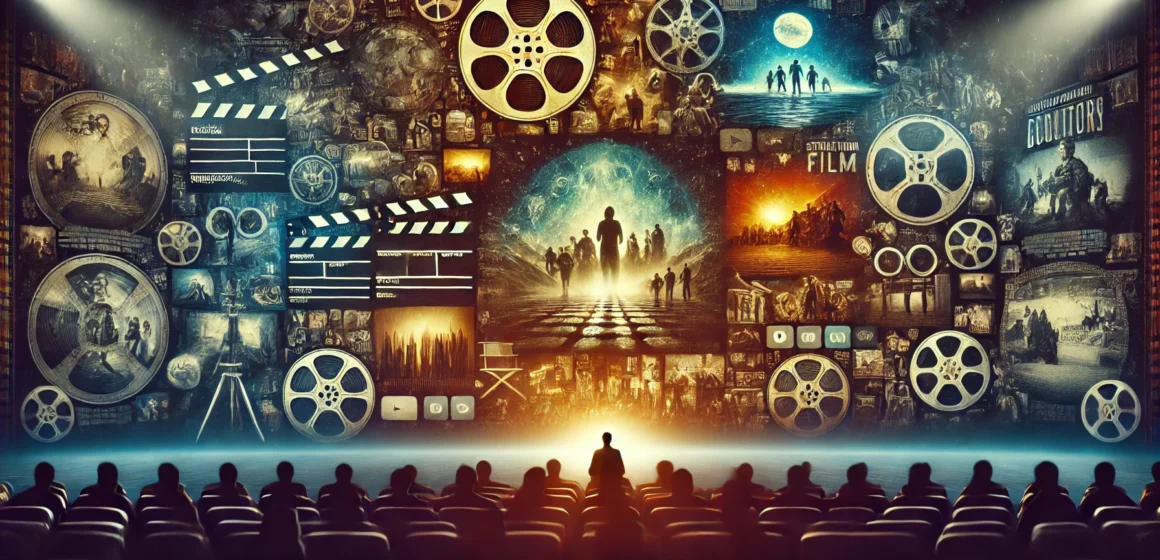Beyond the Screen A Cinematic Adventure
Cinema is more than just a form of entertainment it is an immersive experience that takes audiences on an unforgettable journey beyond the screen. Whether through the magic of storytelling breathtaking visuals or the emotional depth of characters films transport viewers to new worlds spark meaningful conversations and leave lasting impressions. From the golden age of Hollywood to the modern era of streaming platforms the cinematic experience has evolved yet its power to captivate remains unchanged. This article explores the impact of cinema on society the artistry behind filmmaking and how technological advancements continue to push the boundaries of storytelling.

The Power of Cinema
Films have an unparalleled ability to evoke emotions shape perspectives and create cultural phenomena. A well-crafted story can make audiences laugh cry or even question their beliefs. Movies such as Schindler’s List The Shawshank Redemption and Inception demonstrate the power of cinema to inspire and challenge viewers. Filmmakers have the unique opportunity to influence society by addressing important social issues shedding light on history and presenting new ideas in ways that resonate deeply with audiences.
In addition cinema acts as a bridge between cultures allowing people from different backgrounds to connect through shared stories and universal themes. Foreign films like Parasite and Crouching Tiger Hidden Dragon have gained global recognition proving that storytelling transcends language barriers. The emotional depth of a film can unite audiences worldwide reinforcing the idea that human experiences are universal despite cultural differences.
The Artistry Behind Filmmaking
Filmmaking is a collaborative art that combines multiple disciplines including writing directing cinematography acting and editing. Each element plays a crucial role in bringing a story to life. The screenplay serves as the foundation of any film shaping the narrative and dialogue that drive the plot forward. Directors like Christopher Nolan Quentin Tarantino and Steven Spielberg are known for their distinct storytelling styles which set their films apart and define their legacies in the industry.
Cinematography is another essential aspect that enhances the visual appeal of a film. The use of lighting camera angles and color grading can create a specific mood or atmosphere that complements the story. Legendary cinematographers such as Roger Deakins and Emmanuel Lubezki have mastered this craft creating visually stunning films that elevate the cinematic experience.
Sound design and musical scores also play a crucial role in filmmaking. Iconic composers like Hans Zimmer and John Williams have crafted unforgettable scores that become an integral part of a film’s identity. A powerful soundtrack can heighten emotions build tension and leave a lasting impact on viewers long after the credits roll.

The Evolution of Cinema
From black-and-white silent films to the era of digital effects and streaming services cinema has undergone a dramatic transformation. The early days of Hollywood introduced audiences to the magic of storytelling through silent films like The Kid and Metropolis. As technology advanced sound was introduced giving birth to the era of “talkies” with films like The Jazz Singer revolutionizing the industry.
The golden age of Hollywood in the 1930s and 1940s saw the rise of iconic actors such as Humphrey Bogart Audrey Hepburn and James Stewart. This period also introduced timeless classics like Casablanca and Gone with the Wind which set the foundation for modern storytelling.
With the introduction of computer-generated imagery (CGI) in the late 20th century filmmakers gained the ability to create breathtaking visual effects. Films like Jurassic Park and The Matrix showcased how technology could enhance storytelling and expand the possibilities of cinematic worlds. Today CGI is a staple in blockbuster movies allowing filmmakers to bring fantastical creatures futuristic landscapes and epic battle sequences to life.
The Impact of Streaming Platforms
In recent years the rise of streaming services like Netflix Amazon Prime and Disney+ has revolutionized the way audiences consume content. No longer confined to theaters viewers can now enjoy high-quality films and series from the comfort of their homes. Streaming platforms have also opened doors for independent filmmakers providing them with a global stage to showcase their work without the traditional barriers of theatrical distribution.
However this shift has sparked debates about the future of traditional cinema. While streaming offers convenience and accessibility some argue that it diminishes the communal experience of watching films in theaters. The immersive nature of the big screen combined with surround sound and a shared audience reaction creates an unparalleled atmosphere that cannot be replicated at home. Despite these changes major film studios continue to invest in theatrical releases highlighting the enduring appeal of the traditional cinema experience.
The Future of Cinema
As technology continues to evolve the future of cinema promises even more groundbreaking innovations. Virtual reality (VR) and augmented reality (AR) are beginning to reshape storytelling by allowing audiences to interact with narratives in immersive ways. Filmmakers are experimenting with 360-degree storytelling offering viewers a more participatory experience that goes beyond passive watching.
Artificial intelligence (AI) is also making its way into the industry assisting in scriptwriting visual effects and even character animation. AI-generated actors and deepfake technology have raised ethical concerns but also present new creative possibilities for filmmakers.
Additionally diversity and representation in cinema are becoming more significant than ever. Audiences are demanding more authentic and inclusive stories leading to a shift in casting directing and storytelling approaches. Films that celebrate diverse voices and perspectives contribute to a richer and more reflective cinematic landscape.

Conclusion
Cinema is an ever-evolving art form that continues to push the boundaries of creativity and storytelling. Whether through the nostalgia of classic films the innovation of modern blockbusters or the accessibility of streaming platforms movies remain a powerful medium that captivates audiences worldwide. As technology advances and new voices emerge the cinematic adventure will only continue to expand taking viewers on journeys beyond the screen into worlds limited only by imagination. The magic of cinema is timeless and its impact will endure for generations to come.


Leave a Reply